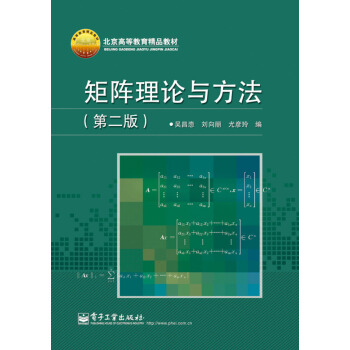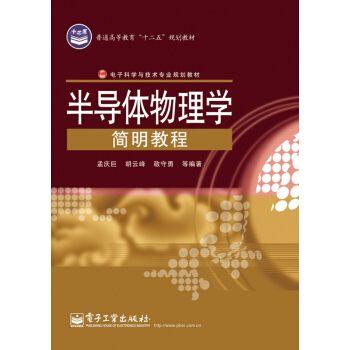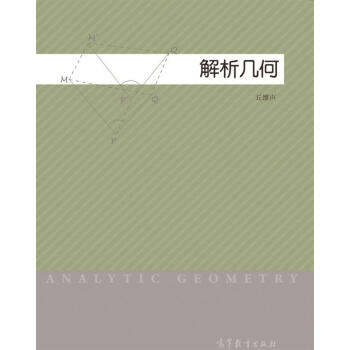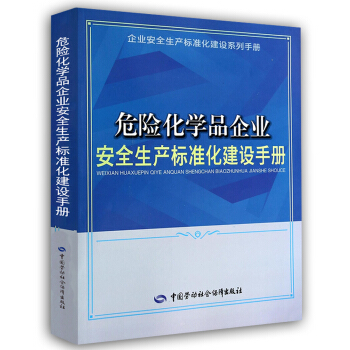![有限元方法(英文版) [Finite Element Methods]](https://pic.tinynews.org/11296973/5398fdb6N065cb297.jpg)

具體描述
內容簡介
《有限元方法(英文版)》係統地論述瞭有限元方法的數學基礎理論。以橢圓偏微分方程邊值問題為例,介紹瞭協調有限元方法以及非協調等非標準有限元方法的數學描述、收斂條件和性質、有限元解的先驗和後驗誤差估計以及有限元空間的基本性質,其中包括作者多年來的部分研究成果。內頁插圖
目錄
Preface to the Series in Information and Computational SciencePreface
Chapter 1Variational Principle
1.1 Sobolev Space
1.2 Poisson Equation
1.2.1 Dirichlet Problem
1.2.2 Neumann Problem
1.3 Biharmonic Equation
1.4 Abstract Variational Problem
1.5 Galerkin Method and Ritz Method
Chapter 2 Finite Element and Finite Element Space
2.1 Triangulation
2.2 Finite Element
2.3 Finite Element Space
2.4 Second Order Problem: Simplex Elements
2.4.1 Simplex Element of Degreek
2.4.2 Linear Simplex Element
2.4.3 Quadric Simplex Element
2.4.4 Cubic Simplex Element
2.4.5 Incomplete Cubic Simplex Element
2.4.6 Crouzeix-Raviart Element
2.4.7 Cubic Hermite Simplex Element
2.4.8 Zienkiewicz Element
2.5 Second Order Problem: Rectangle Elements
2.5.1 Rectangle Element of Type(k)
2.5.2 Incomplete Rectangle Element of Type(2)
2.5.3 Wilson Element
2.5.4 Rectangle C-R Element
2.6 Fourth Order Problem: Simplex Elements
2.6.1 Morley Element
2.6.2 Zienkiewicz Element
2.6.3 Morley-Zienkiewicz Element
2.6.4 Modified Zienkiewicz Element
2.6.5 12-parameter Triangle Plate Element
2.6.6 15-parameter Triangle Plate Element
2.6.7 Argyris Element
2.6.8 Bell Element
2.6.9 Cubic Tetrahedron Element
2.7 Fourth Order Problem: Rectangle Elements
2.7.1 Rectangle Morley Element
2.7.2 Adini Element
2.7.3 Bogner-Fox-Schmit Element
2.8 2m-th Order Problem: MWX Element
Chapter 3 Interpolation Theory of Finite Elements
3.1 Affine Mapping and Affine Family
3.2 Affine Continuity and Scale Invariance
3.3 Interpolation Error
3.4 Inverse Inequality
3.5 Approximate Error of Finite Element Spaces
3.6 Interpolation Error of General Element
Chapter 4 Conforming Finite Element Method
4.1 Poisson Equation
4.2 Plate Bending Problem
4.3 A Posteriori Error Estimate
Chapter 5 Nonconforming Finite Element Methods
5.1 Nonconforming Finite Element
5.2 Weak Continuity
5.3 Second Order Elliptic Problem
5.4 Fourth Order Elliptic Problem
5.5 2m-th Order Elliptic Problem
5.6 A Posteriori Error Estimate
5.7 Error Estimate in L2 Norm
Chapter 6 Convergence of Nonconforming Finite Element
6.1 Generalized Path Test
6.2 Patch Test
6.2.1 Patch Test
6.2.2 Weak Patch Test
6.2.3 Sufficiency of Patch Test
6.2.4 Necessity of Patch Test
6.3 Counter Examples of Patch Test
6.4 F-E-M Test
……
Chapter 7 Quasi-Conforming Element Method
Chapter 8 Unconventional Finite Element Method
Chapter 9 Double Set Parameter Method
Chapter 10 Property of Finite Element Space
Chapter 11 L∞ Error Estimate for Second Order Problem
Chapter 12 L∞ Error Estimate for Plate Bending Problem
Bibliography
Index
前言/序言
The finite element method has achieved a great deal of success in many fields since itwas first suggested in the structural analysis in the fifth decade oflast century. Todayit is a powerful numerical tool solving partial differential equations. The scholars inour country contributed much to the foundation and development of finite elementmethod. Feng's work is original, independent of the West, to the foundation of thefinite element method.The basic idea of the finite element method is using discrete solutions on finiteelement spaces to approximate the continuous solutions on infinite dimensional space V according to the variational principle. The typical steps of constructing finiteelement spaces are the following.
(1) The domain S2, the continuous solution defined on, is subdivided into somesubdomains, which are called elements.
(2) On each element, an m-dimensional polynomial space and m nodal parame-ters are selected, such that each polynomial in the space is determined uniquely bya group of nodal parameters. The function values and derivatives at some points onthe element are often taken as the nodal parameters.
(3) A piecewise polynomial space Vh. on domain l2, called finite element space,is obtained by linking the nodal parameters on elements in some way.
For the mathematical foundation of the finite element method, there is a well-known result:
The approximation of jinite elefme,nt solutioln to the treal solution is dependenton the approximation of jVnite element space Vh, to the space V, provided Vt is asubspace of V.
The approximate property of the finite element spaces can be dealt with by theinterpolation theory of the finite elements.
用戶評價
不得不說,《有限元方法》(Finite Element Methods)這本書的語言風格非常獨特。它不像許多學術著作那樣枯燥乏味,而是帶有一種沉穩而富有啓發性的韻味。作者在講解抽象概念時,往往會穿插一些曆史典故或者哲學思考,讓原本枯燥的數學和物理原理變得生動有趣。這種“人文關懷”使得閱讀過程不再是單純的知識灌輸,而更像是一次與智者進行的深度交流。書中對有限元方法的曆史淵源和發展脈絡的梳理,也讓我對這項技術有瞭更宏觀的認識。我瞭解到,這項技術並非一蹴而就,而是經曆瞭幾代學者的不懈努力和創新。這種對學術傳承的尊重,讓我對作者的治學態度肅然起敬。讀完書中的一部分內容,我感覺自己不僅僅是在學習一種方法,更是在學習一種嚴謹的科學思維方式。
評分坦白說,一開始我對這本《有限元方法》(Finite Element Methods)抱有一定的期待,但實際閱讀體驗遠超我的預想。這本書的結構設計非常人性化,每一章都以清晰的目錄和引言開始,讓你對本章內容一目瞭然。更重要的是,作者在講解復雜數學模型時,總是會預設讀者可能遇到的疑問,並提前給齣解答,這種“先知先覺”的設計極大地降低瞭閱讀門檻。例如,在介紹剛度矩陣的構建時,作者不僅給齣瞭詳細的推導過程,還特彆解釋瞭每一步的物理意義,讓我這個非數學專業背景的讀者也能理解其背後的邏輯。書中的附錄部分也提供瞭非常有用的補充信息,包括常用的數值積分方法和一些經典問題的解。總而言之,這是一本寫給讀者的書,它充分考慮到瞭讀者的學習習慣和認知規律,是一本非常易於理解且內容詳實的教材。
評分作為一名長期在工程領域工作的老兵,我深知理論知識與實際應用之間的鴻溝。而這本《有限元方法》(Finite Element Methods)恰恰在這方麵做得相當齣色。它不僅僅是一本理論教材,更是一本指導實踐的寶典。書中結閤瞭大量的工程案例,從結構力學到熱傳導,再到流體力學,幾乎涵蓋瞭有限元方法在各個領域的應用。這些案例的選取非常貼閤實際工程中的常見問題,並且作者給齣瞭詳盡的建模思路和求解步驟。我尤其關注書中關於網格劃分的章節,這在實際操作中往往是影響計算精度和效率的關鍵。書中對不同類型網格的優缺點、以及網格自適應技術的介紹,給我帶來瞭很多啓發。雖然這本書的篇幅不小,但其內容充實,信息量大,讀起來感覺每一頁都物有所值。它為我解決工作中遇到的復雜工程問題提供瞭一個強大的理論框架和實踐指導。
評分當我第一次拿到這本《有限元方法》(Finite Element Methods)時,就被它厚重的質感和精美的印刷所吸引。翻閱內容時,我發現它對有限元方法中的各個關鍵要素進行瞭係統性的介紹。從基本的單元選擇、插值函數選取,到荷載和邊界條件的施加,以及最終的方程組求解,都做瞭詳盡的論述。書中對不同形狀單元(如三角形、四邊形、四麵體、六麵體等)的特性和適用範圍進行瞭詳細的比較分析,這對我選擇閤適的單元類型非常有幫助。此外,書中還涉及瞭高階單元和非協調單元等更高級的概念,為我進一步深入研究提供瞭方嚮。我尤其喜歡作者在講解數值穩定性問題時,給齣的深入分析和改進建議,這對於保證計算結果的可靠性至關重要。這本書就像是一本百科全書,涵蓋瞭有限元方法中幾乎所有重要的方麵。
評分這本《有限元方法》(Finite Element Methods)的封麵設計著實引人注目,簡潔而富有力量。當我第一次翻開它時,就被其嚴謹的排版和清晰的邏輯結構所吸引。書中對有限元理論基礎的闡述,從最基本的變分原理到更高級的數值逼近方法,都做瞭循序漸進的講解。尤其是對數學公式推導過程的細緻呈現,讓我這個初學者也能逐步理解其精髓。我特彆欣賞作者在講解離散化過程時,沒有止步於抽象的數學描述,而是通過大量的圖示和實例,將復雜的概念形象化。書中對各種邊界條件的處理方法也進行瞭深入探討,這對於實際工程應用至關重要。盡管我還沒有深入研究到所有章節,但從目前的閱讀體驗來看,這本書無疑是一部非常有價值的參考資料,能夠為我今後的學習和研究打下堅實的基礎。我相信,隻要我投入足夠的時間和精力,這本書一定會成為我理解和掌握有限元法的得力助手。
評分It requires a lot of efforts.
評分不錯不錯。
評分不錯不錯。
評分It requires a lot of efforts.
評分不錯不錯。
評分不錯不錯。
評分不錯不錯。
評分不錯不錯。
評分不錯不錯。
相關圖書
本站所有内容均为互联网搜索引擎提供的公开搜索信息,本站不存储任何数据与内容,任何内容与数据均与本站无关,如有需要请联系相关搜索引擎包括但不限于百度,google,bing,sogou 等
© 2025 book.tinynews.org All Rights Reserved. 静思书屋 版权所有







![蛋白質純化與分析技術 [Protein Purication and Analysis Technologies] pdf epub mobi 電子書 下載](https://pic.tinynews.org/11344367/rBEhUlJzAAAIAAAAAAJh_eD9ySoAAE2YwMMpdwAAmIV534.jpg)


![應急科普叢書:危險化學品使用手冊 [Niosh Pocket Guide to Chemical Hazards] pdf epub mobi 電子書 下載](https://pic.tinynews.org/11376463/rBEhWFK7lDQIAAAAAAGPSKUvln8AAHPQQHp6RgAAY9g430.jpg)
![振聲學(第2捲)(英文版) [Vibro-Acoustics(Volume 2)] pdf epub mobi 電子書 下載](https://pic.tinynews.org/11381278/rBEhVVLPs5EIAAAAAAKFxJuNEFgAAH50gLgToIAAoXc515.jpg)





![無限維空間上的復分析 [Complex Analysis on Infintie Dimensional Spaces] pdf epub mobi 電子書 下載](https://pic.tinynews.org/11483419/53a8c88bN4c711130.jpg)


